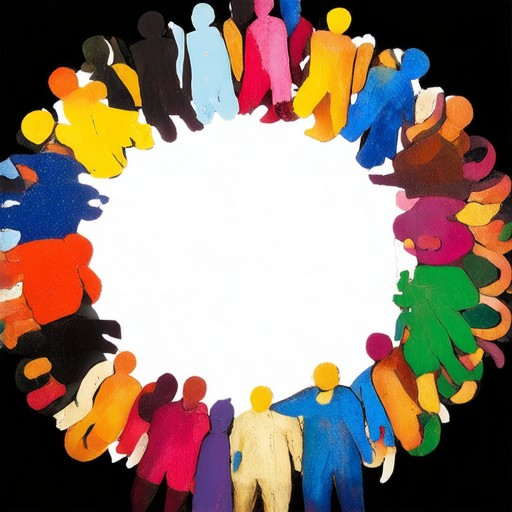Exploring global cultural perspectives offers a unique lens through which we can understand the intricate tapestry of human diversity and the interconnected nature of our world. In an era marked by rapid globalization, understanding cultural perspectives has become essential for fostering empathy, collaboration, and adaptability in an increasingly interconnected society. Whether you’re navigating international business dealings, teaching in multicultural classrooms, or simply seeking to broaden your worldview, grasping global cultural perspectives is not just advantageous—it’s imperative. This exploration delves into the multifaceted nature of global cultural perspectives, examining their definition, significance, and practical applications across various domains. By unpacking the three pillars of global culture, real-world examples, and emerging trends, this article aims to provide a comprehensive understanding of how global perspectives shape our lives and influence the way we interact with the world around us. From the impact of digital cultures in South Asia to the preservation of cultural heritage in a globalized world, this journey into global cultural perspectives promises to enrich your knowledge and inspire meaningful connections across borders.
Key Takeaways
- Global Perspectives Broaden Cultural Understanding: By viewing events from a global lens, individuals gain empathy and insight into diverse cultures and traditions.
- Enhanced Decision-Making with Global Insights: Considering global impacts helps in making informed choices that account for broader implications.
- Developing Global Perspectives via Travel and Media: Engaging with different cultures through travel and diverse media sources enriches one’s worldview.
- Examples of Global Issues Highlight Interconnectedness: Environmental sustainability and economic interdependence illustrate how global challenges require collective action.
- Overcoming Challenges in Global Perspectives: Addressing cultural differences and resource disparities is crucial for effective global cooperation.
- Mastering Global Perspective Skills is Key: Possessing skills like intercultural communication and problem-solving equips individuals for global challenges.
- Innovation and Collaboration Result from Global Views: A global perspective fosters innovative solutions and teamwork needed for tackling complex issues.
- Educational Tools Support Global Learning: Resources like Cambridge Primary Global Perspectives and EF Education First aid in developing global citizenship skills.

Global and Cultural Perspectives
A global perspective refers to understanding the interconnected nature of the world, recognizing the impact of various regions and cultures on each other. It involves seeing beyond local boundaries to grasp broader trends, challenges, and opportunities that shape our lives.
Cultural perspective, on the other hand, focuses on understanding the unique traditions, beliefs, and practices of specific groups or communities. It emphasizes the diversity of human experiences and the importance of preserving and celebrating cultural heritage.
How Global and Cultural Perspectives Interconnect
Both global and cultural perspectives are deeply intertwined. A global view often requires cultural awareness, as it considers how different cultures contribute to global issues such as climate change, trade policies, and technological advancements. Conversely, cultural perspectives are enriched by global interactions, which introduce new ideas and customs into local traditions.
The Importance of Understanding Both Perspectives
Understanding both global and cultural perspectives fosters empathy and open-mindedness. It allows individuals to appreciate the complexity of human experiences and to navigate an increasingly interconnected world with greater sensitivity and intelligence.
Examples of Global and Cultural Insights
- Global Example: Climate change impacts everyone, regardless of cultural differences. Understanding its global implications helps us develop solutions that respect diverse needs and perspectives.
- Cultural Example: Festivals like Diwali in India or Carnival in Brazil have global significance, yet they remain deeply rooted in cultural traditions. Recognizing their cultural importance while acknowledging their global appeal enriches our understanding.
Conclusion
By cultivating both global and cultural perspectives, we gain the ability to see the world from multiple viewpoints. This dual awareness enhances our capacity for innovation, problem-solving, and building meaningful connections across borders. Ultimately, it empowers us to contribute positively to a more inclusive and harmonious world.
What Are the Three Perspectives of Global Culture?
Global culture encompasses a wide array of perspectives that reflect the interconnectedness of various societies. Here are the three primary viewpoints:
- Differentialism
Differentialism emphasizes the unique characteristics and resilience of individual cultures amidst globalization. It posits that while global forces influence cultural practices, distinct traditions often persist due to their deep-rooted values and identities. For instance, traditional festivals and customs continue to thrive despite the encroachment of globalized norms. - Hybridization
Hybridization describes the process by which cultures merge and blend, giving rise to new forms of expression. This perspective highlights how global interactions lead to creative exchanges, resulting in unique cultural hybrids. Fusion cuisine, for example, exemplifies this concept through the combination of different culinary traditions. - Convergence
Convergence focuses on the ways in which global cultures influence one another, often leading to similarities in certain aspects of life. This viewpoint suggests that shared global trends, such as media consumption patterns or consumer behavior, create a more homogeneous cultural landscape. However, convergence does not mean cultural homogenization, as local adaptations still play a significant role.
These perspectives collectively illustrate the dynamic nature of global culture, shaped by both external influences and internal adaptability. To explore these ideas further, you can visit our platform at bendingborders.org .

Cultural Perspective Example
A cultural perspective refers to the unique ways individuals perceive and interpret the world around them based on their background, beliefs, and experiences. To illustrate this concept, consider the differing approaches to communication in various cultures:
- Individualistic vs. Collectivistic Cultures :
In Western cultures, individualism often prevails, where personal achievements and self-expression are highly valued. People may approach interactions with a focus on personal goals and autonomy. Conversely, in many Eastern cultures, collectivism is emphasized, where group harmony and community ties are prioritized. For instance, in Japan, communication often involves indirectness and respect for hierarchy, reflecting a collectivist mindset. - Time Perception :
Monochronic cultures, such as those in North America and Europe, tend to view time linearly, valuing schedules and organization. Polychronic cultures, like those in Latin America and parts of Africa, may see time more flexibly, emphasizing relationships and spontaneity. This difference significantly influences daily life and work ethics. - Communication Styles :
Communication in some cultures may be more reserved and formal, while in others, it is casual and expressive. For example, in many Asian cultures, direct confrontation is avoided, and harmony is maintained through indirect communication. In contrast, in some African cultures, communication may be more expressive and inclusive, involving storytelling and group participation.
These examples highlight how cultural perspectives shape behaviors, values, and social norms, illustrating the rich diversity of human experiences.

What Are Global Perspectives?
Global perspectives refer to the ability to view events, issues, or experiences from a broad, worldwide lens. This approach considers how actions, ideas, and phenomena affect individuals and communities across the globe, rather than focusing solely on local or national contexts.
Why Are Global Perspectives Important?
- They foster empathy and understanding by exposing individuals to diverse cultures, traditions, and viewpoints.
- They enable better decision-making by considering the ripple effects of decisions on a global scale.
- They prepare individuals to navigate an increasingly interconnected world, where problems often require multinational solutions.
Examples of Global Perspectives
- Bending Borders explores global insights through travel stories and cultural explorations.
- National Geographic highlights global perspectives by showcasing diverse cultures and environmental issues.
- Rough Guides offers travel guides that incorporate local customs and global trends.
- Intrepid Travel focuses on responsible tourism, emphasizing cross-cultural interactions.
- CNN Travel & Culture provides insights into how different regions shape their identities.
How to Develop Global Perspectives
- Engage with diverse media sources to gain exposure to different viewpoints.
- Travel to different countries to experience firsthand how lifestyles and cultures vary.
- Participate in global causes or initiatives to understand their impact on a wider audience.
- Stay informed about international news and current events to see how they influence various societies.
By cultivating global perspectives, individuals can become more informed, empathetic, and adaptable citizens of the world. This understanding is essential in today’s interconnected society, where global challenges require collaborative solutions.
What is an example of a global perspective?
A global perspective refers to viewing issues, challenges, or opportunities through a lens that considers the entire world rather than just a local or national context. This approach involves understanding how interconnected events, cultures, economies, and environments impact one another across borders.
Examples of a Global Perspective:
- Environmental Sustainability:** Climate change affects every region of the world, requiring collaborative efforts among nations to address its effects, such as reducing carbon emissions and managing waste.
- Economic Interdependence:** The global economy relies on trade between countries, which means policies in one country can have ripple effects globally, impacting industries and job markets worldwide.
- Health Crises:** Pandemics, such as COVID-19, transcend political boundaries, necessitating global cooperation to develop vaccines and share medical resources efficiently.
- Cultural Exchange:** Migration and cultural influences shape societies, demonstrating how ideas and traditions can spread and evolve across different regions.
- Technological Advancements:** Innovations like renewable energy technologies require international collaboration to research, develop, and distribute solutions effectively.
Significance of a Global Perspective:
- Innovation:** Addressing global challenges often requires innovative solutions that can only be achieved through global collaboration.
- Collaboration:** Many complex issues, such as terrorism or climate change, demand partnerships between governments, organizations, and individuals worldwide.
- Problem-Solving:** A global perspective helps identify interconnected causes and effects, leading to more effective and sustainable solutions.
Challenges of a Global Perspective:
- Cultural Differences:** Disparities in values, beliefs, and practices can hinder cooperation and understanding.
- Conflicting Interests:** Political, economic, and social factors may lead to disagreements among nations or groups.
- Resource Limitations:** Addressing global issues often requires shared resources, which can be challenging due to unequal distribution.

Understanding the Five Skills of Global Perspective
Global perspective encompasses a broad understanding of the world beyond one’s immediate environment. It involves recognizing the interconnectedness of various cultures, societies, and economies. Developing this perspective is crucial for individuals aiming to thrive in an increasingly interconnected world. Below are the five essential skills associated with global perspective:
- Intercultural Communication : The ability to communicate effectively across different cultures. This skill involves understanding cultural norms, communication styles, and verbal/non-verbal cues.
- Critical Thinking and Analysis : The capacity to analyze situations from multiple perspectives, evaluate information, and draw informed conclusions. This helps in navigating complex global issues.
- Collaboration and Teamwork : Working effectively with people from diverse backgrounds. This skill is vital for international projects and teams.
- Problem-Solving Across Cultures : The ability to address challenges in cross-cultural contexts. This involves adaptability and creativity in finding solutions.
- Global Awareness and Sensitivity : Understanding global issues such as sustainability, human rights, and economic disparities. This fosters empathy and a sense of responsibility towards the global community.
These skills are often taught through educational programs like Cambridge Primary Global Perspectives , which aim to prepare students for a globalized world. By cultivating these abilities, individuals can bridge cultural gaps, foster international cooperation, and contribute positively to global challenges.
For further reading on global education and development, explore resources from organizations like EF Education First , which offer insights into intercultural learning and global citizenship.




0 Comments